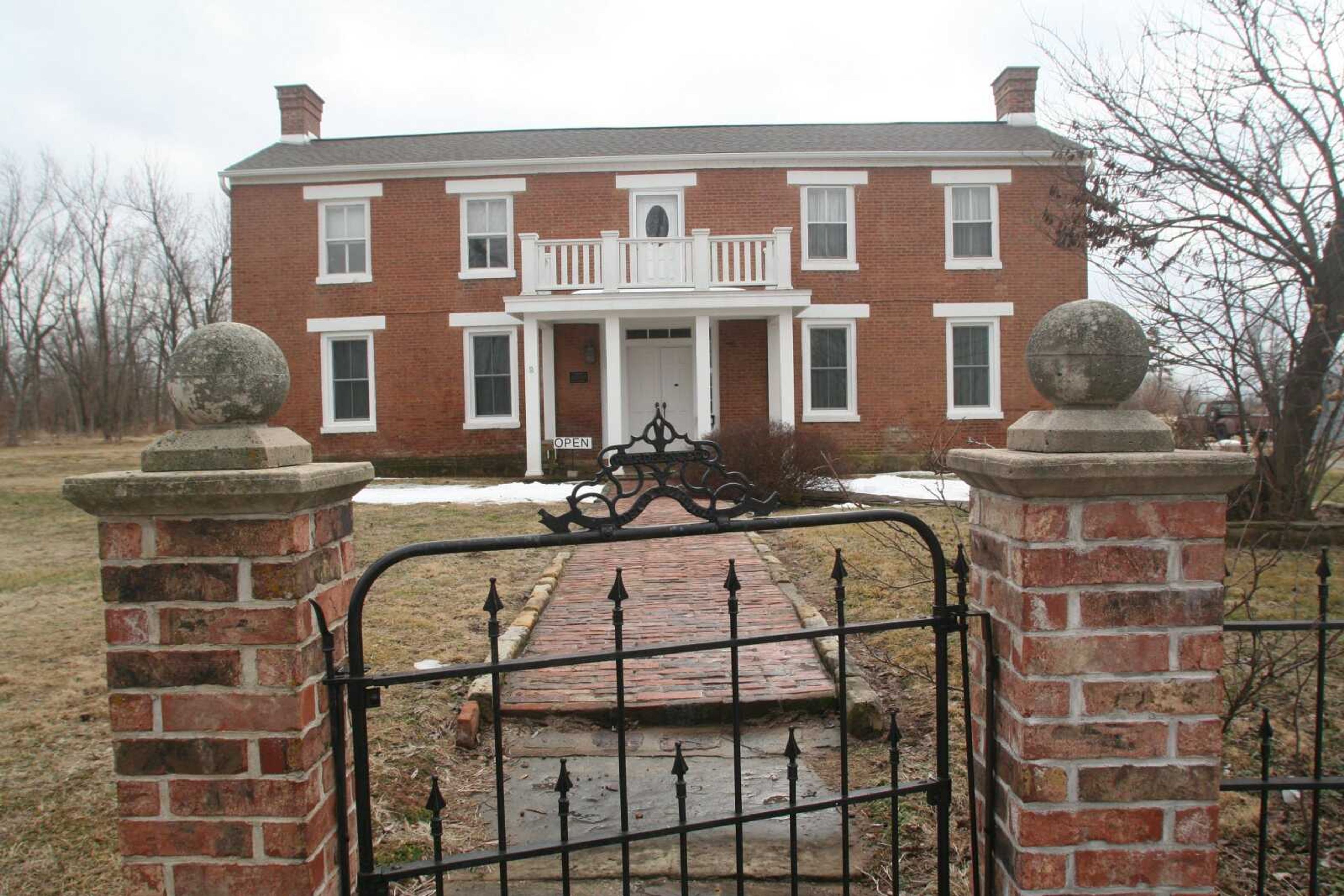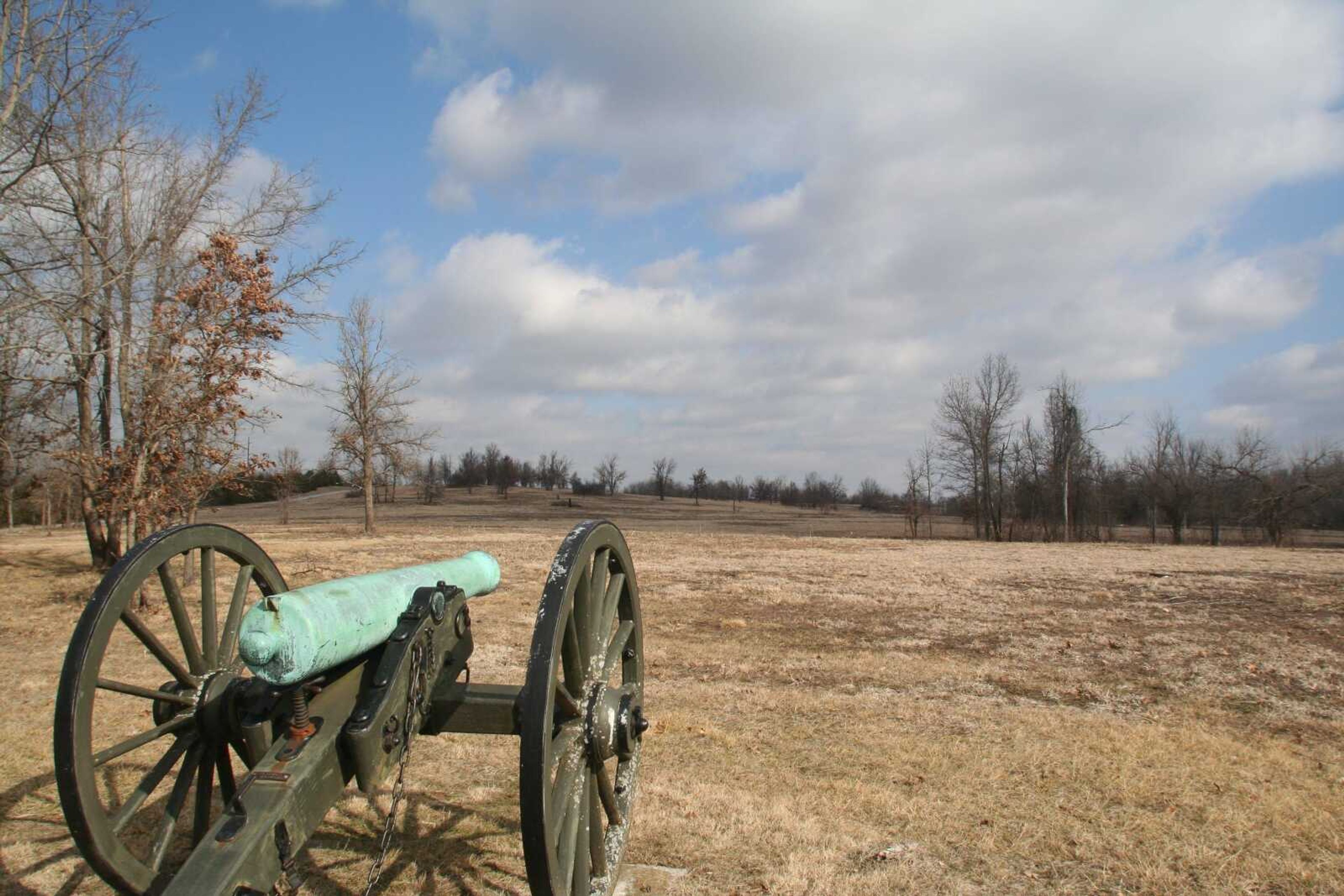Anniversary of Mo.'s first big Civil War battle this week
Wednesday marks 150 years since Nathaniel Lyon was killed by a bullet through the heart in a battle in southwest Missouri, becoming the first Union general to die in the Civil War.
Editor's note: The following is the first in a series about Missouri and its involvement in the Civil War, which began in April 1861. The second part of the Civil War series will feature the Fort Davidson State Historic site in Southeast Missouri, where Price's forces fought against outmanned Union troops. Look for it and the remaining entries in Good Times each week.
Wednesday marks 150 years since Nathaniel Lyon was killed by a bullet through the heart in a battle in southwest Missouri, becoming the first Union general to die in the Civil War.
Before the day of fighting was over, he was joined in death by 258 Union soldiers and 277 Confederate and pro-Southern Missouri State Guard soldiers.
Named for a stream that cuts through the Ozark hills and valleys where the blood was shed, the Battle of Wilson's Creek in 1861 was the first major Civil War engagement in Missouri.
Today, it is one of the country's national battlefields that commemorate milestones in the Civil War.

"It's the site of the first major battle west of the Mississippi River," said John Sutton, chief ranger for the Wilson's Creek National Battlefield in Republic, southwest of Springfield. "The first Union general killed in the war died here. Another significance is the landscape still evokes the experience those soldiers had when they fought the battle."
Wilson's Creek is a fitting spot to open a five-part series marking the sesquicentennial of the Civil War. Missouri was a major player in the war, with only Virginia and Tennessee experiencing more battles on their soil.
The first of the reports deals with the southwest corner of the state, including the Battle of Carthage, Wilson's Creek, a visit to tiny Newtonia, where Ritchey's Mansion was at the center of two separate battles, and the burning of the town of Nevada.
Cannons on Bloody Hill
In July 1861, Brig. Gen. Nathaniel Lyon, a West Point graduate and supporter of President Abraham Lincoln, was camped near Springfield with 6,000 Union soldiers.
By the month's end, Maj. Gen. Sterling Price, a former Missouri governor leading the pro-Southern Missouri State Guard, had joined Brig Gen. Benjamin McCulloch and his Confederate forces. They assembled some 12,000 men just southwest of Springfield.
The fatal clash on Aug. 10 at Wilson's Creek included a five-hour raging battle on what became known as Bloody Hill. Lyon, already wounded twice, was fatally shot as he led a charge.
The Southerners claimed victory, but Missouri ultimately stayed under Union control. A driving tour of Wilson's Creek National Battlefield follows a 4.9-mile loop to the major points. A brochure explains the stops along the way, with short walks to the exhibits. Cannons point ominously on Bloody Hill. The battlefield has a visitor center with a 30-minute introductory film, a museum building with a collection of some 6,000 artifacts and a recreational lane along the roadway for pedestrians and bicyclists. There also are hiking and equestrian trails.
The National Park Service has restored the only surviving home that was on the site in 1861. It was owned by farmer John Ray, who watched from his porch as fighting raged in his cornfield. The house served as a field hospital for wounded soldiers from both sides.
The battlefield encompasses 1,900 acres with fields and forests that present a serene setting to contemplate the horrors of 150 years ago.
"There aren't many modern visual elements on the battlefield," Sutton said. "You get down along the creek and other places, you can use your imagination to see what it would be like to have been there on Aug. 10, 1861."
The Wilson's Creek National Battlefield Foundation has scheduled a large-scale re-enactment on land adjacent to the battlefield Aug. 12 to 14. For more information, visit www.wilsonscreek.com.
Caught in a whirlwind
Bordered by three free states, Missouri was a slave state, although most of its residents chose to remain neutral as the war approached. But tensions smoldered, especially along the border with Kansas as "Jayhawkers" ventured into Missouri. On the Missouri side, the guerrilla fighters with Southern sympathies were known as "Border Ruffians" or "Bushwhackers."
In December 1858, the Kansas abolitionist John Brown made a raid into Vernon County in Missouri to liberate slaves. Ten months later, Brown made a more ambitious raid at Harpers Ferry, Va., an event that hastened the coming of the war and led to his execution for treason.
Terry Ramsey, director of the Bushwhacker Museum in Nevada in Vernon County, said many of the early settlers were from the South. They brought their traditions, including slave ownership.
"We didn't have the kind of farming that required large numbers of slaves," Ramsey said. "People might have a house slave or a couple. That doesn't mean they weren't owned; it was just smaller and different."
But Vernon County got the reputation as a "Bushwhacker capital." After a group of Union soldiers was attacked in Nevada, with two killed, federal militia from Cedar and St. Clair counties retaliated in May 1863.
"This town was burned to the ground by those 'damn Yankees,'" Ramsey said. "They couldn't find the Bushwhackers because they were up in Cedar and St. Clair counties burning down the homes of the guys who were here.
"That's what the border war was all about -- revenge, retaliation and retribution."
The Bushwhacker Museum has a "Border War" display, and the $5 admission gets you into the Bushwhacker Jail down the street. The jail is made of massive limestone blocks and was one of the few buildings left standing after the fire.
A marker in front of the stately Vernon County Courthouse in Nevada gives a poignant assessment of the Border War: "Such was the neighbor against neighbor war of which the burning of Nevada was part -- not the glamorous war of battlefield and immortal warriors, but the gritty, sordid, suffering war of ordinary folk caught in a storm as inexplicable to them as a whirlwind."
Escaping unscathed
After the Civil War's first official shots were fired at Fort Sumter in South Carolina on April 12, 1861, President Lincoln called for volunteer military units from the states. Missouri Gov. Claiborne Fox Jackson, a slave owner, held Southern sympathies and refused the call. Instead, Jackson formed the Missouri State Guard to repel a possible invasion of Missouri by federal troops.
Jackson and his makeshift army of 6,000 men, 2,000 of them unarmed, headed toward Arkansas. Union Col. Franz Sigel and his army of 1,100 well-drilled soldiers, most of them German-Americans from St. Louis, were sent to stop Jackson.
The two met July 5, 1861, in southwest Missouri in one of the earliest engagements in the Civil War. The Battle of Carthage State Historic Site marks where both sides camped, the Union troops the night before and the Missouri State Guard troops the night following the battle.
The historic site has a kiosk explaining the battle. The site itself is in a parklike setting, with a small spring gurgling from a stony bluff. The free Civil War Museum, a block off the town square in Carthage, also vividly tells the story, with artifacts, a diorama and large mural of the running battle by local artist Andy Thomas.
"The battle began at 8:30 in the morning, and the fighting went back and forth all day," museum interpreter Connie Sullivan said. "It ended up in the town square about dusk."
Sigel was forced to retreat, but only 13 of his men were killed and he had all but one of his 32 supply wagons intact. Jackson's untrained forces recorded 30 dead and allowed a numerically inferior enemy to escape virtually unscathed.
Also open for tours in Carthage is the Kendrick House, a historic mansion that was used as Confederate quarters during a skirmish known as the Second Battle of Carthage. The house was one of the few buildings spared when Carthage, like Nevada, was burned in 1864.
Bands of thugs
Claiborne Jackson set up a government in exile in southwest Missouri. He convened a secessionist, rump state legislature and signed the Ordinances of Secession on Oct. 31, 1861, in an attempt to separate Missouri from the Union.
Neosho, where the legislature convened, has a wayside marker on the courthouse square describing the action. The "secession convention" ended in Cassville, which also has a marker on its courthouse square.
The Ritchey Mansion, on a side street in Newtonia, was at the center of two Civil War battles. An interpretive kiosk in the yard next to the two-story brick home built in 1851 by Mathew Ritchey explains the battles that took place in September 1862 and October 1864.
The area was coveted by both sides because of the lead available at mines in nearby Granby and the meal and flour produced at Ritchey's mill in Newtonia.
The mansion is now owned by the Newtonia Battlefields Protection Association, which gives free tours. "The house was used as a hospital during the first battle, and probably during the second," said Larry James, president of the association. "There weren't many homes left.
"There were as many as 13 families living in the barn during the Civil War. Either their homes were destroyed, or they were fearful of the roving bands of thieves and thugs.
"It didn't matter which side you were on. They were out to steal what they could get."
The second battle of Newtonia marked the end of Maj. Gen. Sterling Price's raid through Missouri. He had returned to the state in 1864 with 12,000 men and fought 43 battles or skirmishes before he retreated back to Arkansas.
Connect with the Southeast Missourian Newsroom:
For corrections to this story or other insights for the editor, click here. To submit a letter to the editor, click here. To learn about the Southeast Missourian’s AI Policy, click here.










